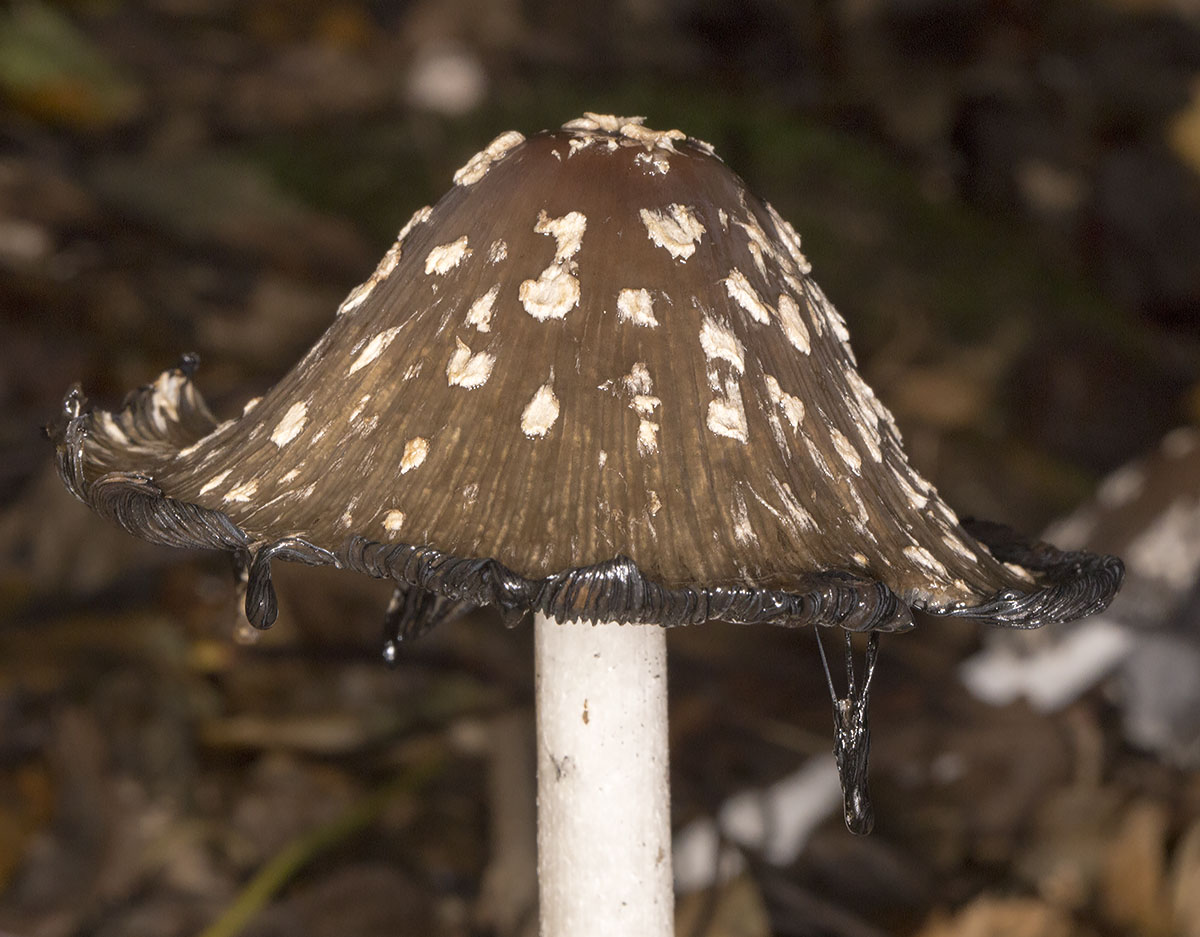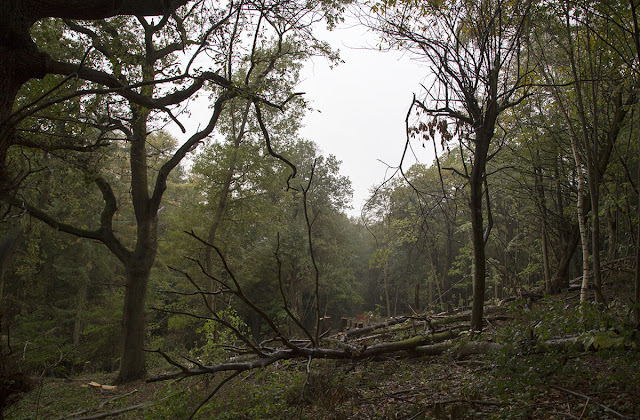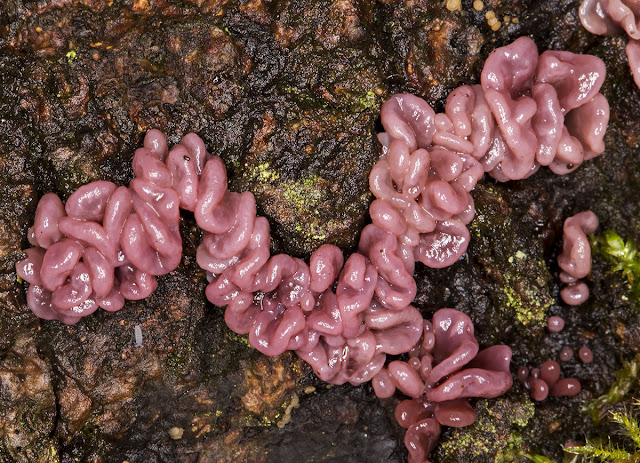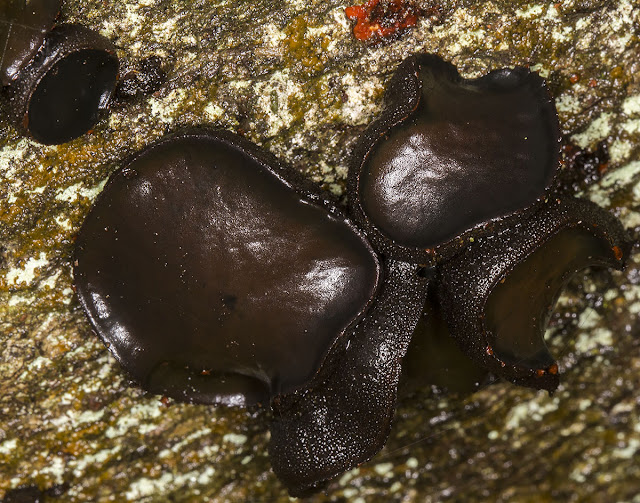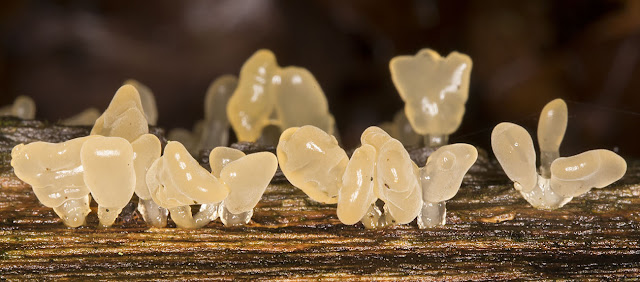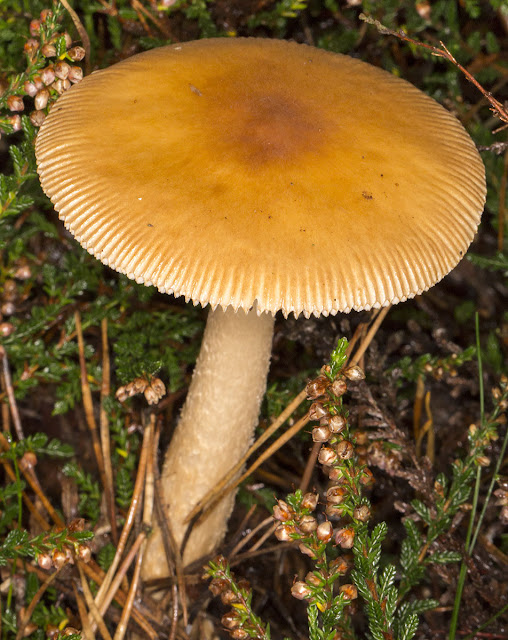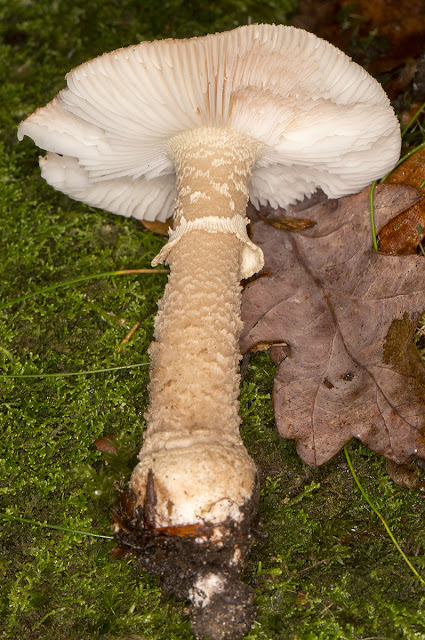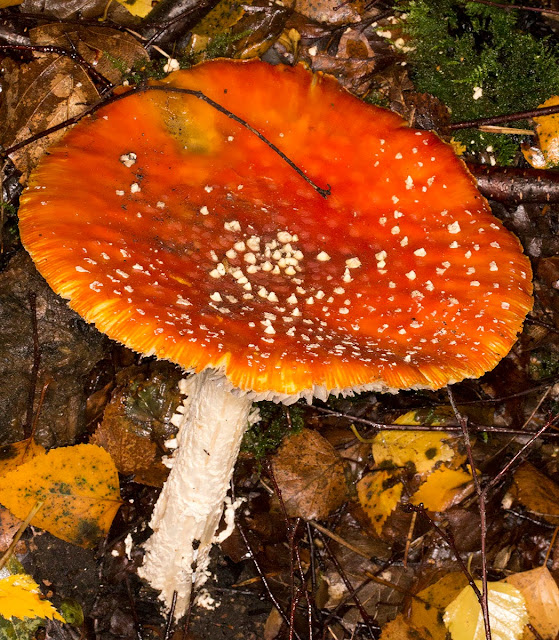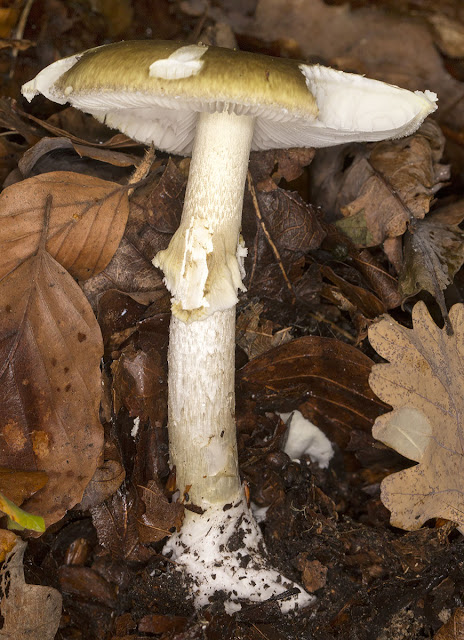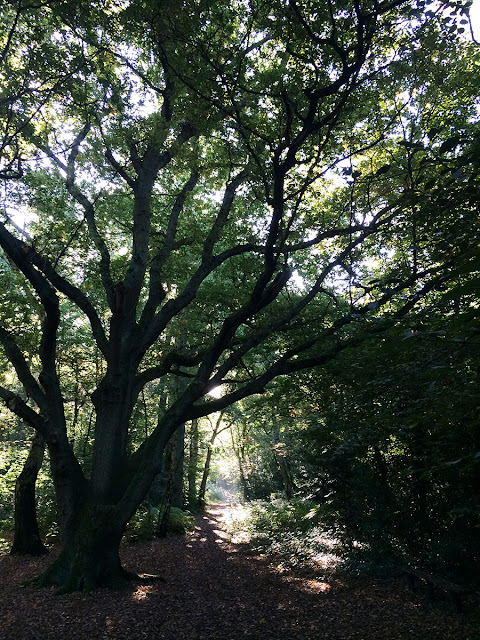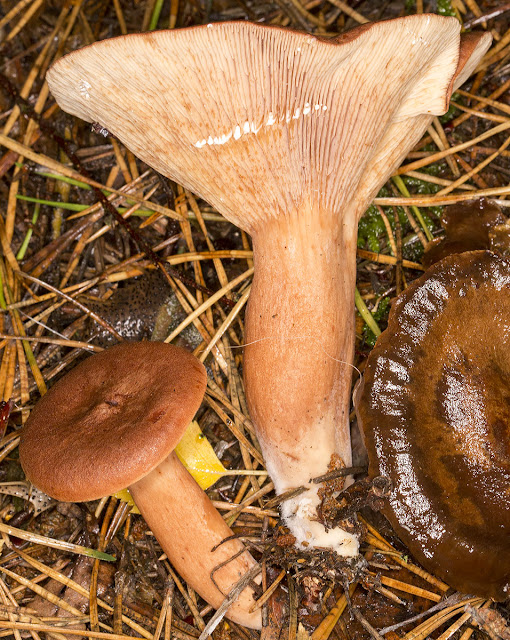 |
| Lactarius rufus, Rufous Milkcap. Keston Common, 19 October 2013. |
Fungus season! I have been out with a couple of groups and I am learning quite a lot, which is easy from a starting point of not knowing very much at all.
The fungi in this post are Lactarius species. It's easy to identify the genus, because when they are damaged, they exude "milk". Of course, there are quite a few species, but most of them are identifiable with a bit of care - or so I am told!
This first one was growing in clumps among Scots Pine. There are two possibilities for something among conifers that looks like this, and the other one has milk that turns green after a couple of minutes; which this didn't.
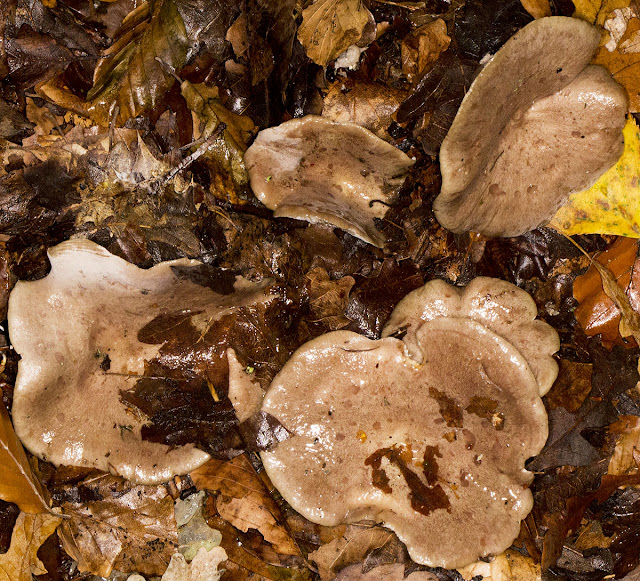 |
| Lactarius vietus, Grey Milkcap. Keston Common, 19 October 2013. |
This one just has white milk. It hides quite successfully in the leaf litter. There's actually another species that is very similar, Lactarius turpis, and I.m not going to swear that this isn't it.
Some of them can be told by the taste of the milk. It's not a good idea to taste fungi unless you are sure they are not deadly, and there are some deadly ones out there. For these, I touched my finger to the milk and dabbed a tiny bit on my tongue. Some are acrid, some are hot like a chilli. The first one above has milk which tastes a little acrid, then suddenly becomes hot.
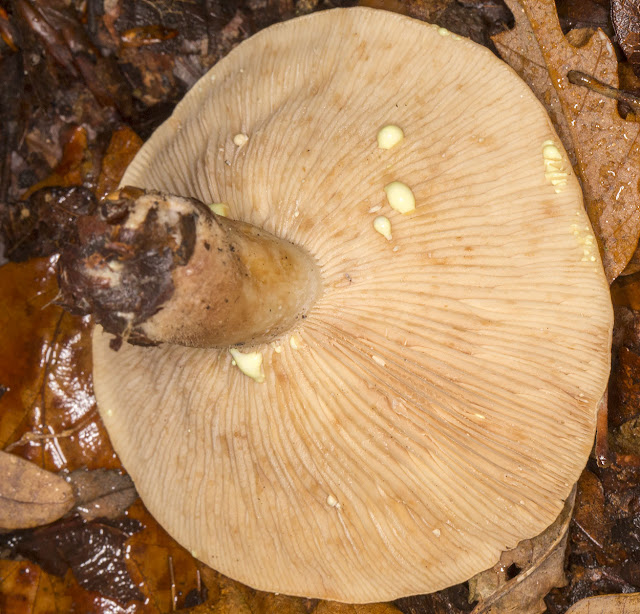 |
| Lactarius chrysorrheus, Yellowdrop Milkcap. Keston Common, 19 October 2013. |
The milk of this species is yellow from the start, and flows copiously.
The common names shown here come from the Collins Complete Guide to British Mushrooms and Toadstools. It's not really complete, but it is pretty good. But the common names are mostly fanciful fabrications. Some fungi do have real country names, but most don't. The ones that sound either convincing or odd are probably genuine, like the Yellowdrop and this one:
 |
| Lactarius quietus, Oakbug Milkcap. Keston Common, 19 October 2013. |
It grows near oak trees.
One of my fungus books, Mushrooms by Roger Phillips, gives brief notes as to edibility. Of these four, the Oakbug Milkcap is noted as edible; the Yellowdrop is poisonous; L. vietus is listed as not edible, which probably means it doesn't taste good or is perhaps tough or fibrous; and L. rufus, although also not edible, is said to be used in some places as a seasoning after unspecified "special treatment".
Fungus foragers need to know their stuff.

















